Chiropractic care offers a non-invasive approach to treating herniated discs. Many people seek this alternative to surgery. A herniated disc occurs when the inner gel leaks through a tear in the outer layer. This can cause significant pain and discomfort.
Chiropractors use spinal manipulation to relieve pressure on nerves. This can help reduce pain and improve mobility.
Patients often report significant improvement after chiropractic care. It’s a promising option for those with herniated discs.
Chiropractic treatment is generally safe when performed by a licensed professional. It can be a safer alternative to surgery for some.
Chiropractors assess the entire spine to determine the best treatment approach. They may use techniques like flexion-distraction.
Chiropractic care can help with both lumbar and cervical herniated discs. It can also complement other treatments like physical therapy.
Understanding how chiropractic care can help is crucial. It offers a holistic approach to managing back pain.
Understanding Herniated Discs: Causes, Symptoms, and Diagnosis
A herniated disc, often termed a “slipped” or “ruptured” disc, is a common spinal issue. It happens when the soft inner gel of a disc slips through a tear in its harder outer covering. This condition can affect the cervical, thoracic, or lumbar regions of the spine.
Several factors contribute to a herniated disc. Age-related wear and tear, improper lifting techniques, and spinal injuries are common causes. These factors increase disc vulnerability, making them more prone to herniation.
Symptoms vary based on the location of the herniation. Common signs include:
- Sharp pain in the back or neck
- Numbness or tingling in limbs
- Weakness in muscles
- Discomfort that worsens with certain movements
Diagnosing a herniated disc typically involves a physical examination and a review of symptoms. Doctors may also recommend imaging tests. X-rays, MRIs, and CT scans help reveal the herniation’s extent and location.
Early diagnosis is crucial for effective management. Understanding the symptoms can lead to timely intervention. It’s essential to consult a healthcare professional if you experience persistent back pain. Accurate diagnosis ensures appropriate treatment and better outcomes.
How Chiropractic Care Addresses Herniated Discs
Chiropractic care offers a non-invasive alternative for those dealing with herniated discs. This approach focuses on spinal alignment and uses techniques designed to alleviate pain.
Chiropractors assess the entire spine, not just the affected area. This holistic approach ensures a more comprehensive treatment plan. By evaluating the spine’s overall condition, chiropractors can identify areas needing attention.
Adjustments and spinal manipulations are central to chiropractic care. These gentle movements aim to realign the spine, relieving pressure on the affected nerves. As pressure decreases, symptoms like pain and numbness often improve.
In addition to manual adjustments, chiropractors may recommend supportive therapies. These can include:
- Decompression table
- Flexion-distraction technique
- Physical Therapy
Patient-specific treatment plans are common in chiropractic care. Each plan considers the unique needs and severity of the disc herniation. This personalized approach increases the likelihood of successful outcomes.
Chiropractic care extends beyond adjustments. It includes recommending exercises and lifestyle changes. These changes support long-term recovery and help prevent future disc issues. Overall, chiropractic treatment aims to restore mobility and improve the quality of life.
Common Chiropractic Techniques for Herniated and Slipped Discs
Chiropractic care employs various techniques to address herniated and slipped discs. These methods target spinal alignment and nerve compression. Different techniques suit different symptoms and disc issues. Here, we’ll delve into some commonly used techniques.
Flexion-Distraction Technique
Flexion-distraction is a widely used chiropractic technique for herniated discs. This non-thrusting technique is gentle yet effective. It involves using a special table that flexes the spine.
The technique increases the space between vertebrae. This reduces pressure on nerves, fostering natural healing. Patients often experience less pain and improved function.
Flexion-distraction can be beneficial for patients with lumbar disc issues. It offers relief without the need for invasive procedures. This technique is favored for its safety and effectiveness.
Pelvic Blocking and Traction Therapy
Pelvic blocking uses cushioned wedges under the patient’s pelvis. This technique helps reduce pressure on the herniated disc. By altering the pelvis’ position, spinal motion improves.
Traction therapy involves gently stretching the spine. This technique aims to create space and reduce nerve compression. It is designed to alleviate symptoms associated with herniated discs.
Both pelvic blocking and traction therapy are gentle and non-invasive. They offer a safe alternative to more aggressive treatments. These techniques support spine health and function.
Manual Adjustments and Spinal Manipulation
Manual adjustments are central to chiropractic practice. These precise movements aim to realign the spine. By doing so, chiropractors relieve nerve pressure and reduce pain.
Spinal manipulation is often used for acute and chronic disc issues. This technique restores proper spinal alignment. Proper alignment can alleviate symptoms and enhance mobility.
These adjustments are tailored to the patient’s condition. Chiropractors assess each case to determine the best approach. Manual adjustments promote healing and overall well-being.
Safety of Chiropractic for Herniated Discs: What You Need to Know
Many people ask – is Chiropractic safe for herniated disc? Yes, Chiropractic care is generally considered safe due to it’s non-invasive and often used as an alternative to surgery. However, safety largely depends on the chiropractor’s expertise.
Before beginning treatment, a full assessment is necessary. Licensed chiropractors conduct thorough evaluations, including medical history reviews. This helps in identifying any contraindications.
For a herniated disk chiropractor may utilize imaging tests such as X-rays or MRIs. These tests help evaluate the severity and location of the herniation. Such detailed assessment ensures appropriate and safe treatment.
Patients should actively communicate with their chiropractors. Sharing symptoms and progress helps tailor safe and effective care. Chiropractors can adjust treatment plans based on patient feedback.
For safety, consider these points:
- Discuss any previous injuries or conditions.
- Follow all care recommendations and exercise guidelines.
When performed by a qualified professional, chiropractic care can be a safe option for many. It provides significant relief while minimizing risks. Always ensure open dialogue with your healthcare provider for optimal safety and results.
Can a Chiropractor help with a Slipped Disc?
A common question among patients is whether a herniated disc and chiropractor go hand-in-hand. Chiropractic for herniated disc care, provides a non-surgical approach to managing disc issues.
Chiropractors aim to reduce symptoms like pain and discomfort. This is achieved by alleviating pressure on the nerves through spinal adjustments. By restoring spinal alignment, chiropractors help facilitate natural healing processes.
The effectiveness of chiropractic care varies among individuals. Some patients experience immediate improvement, while others may need multiple sessions. Persistent dedication to the treatment plan often yields the best results.
Key benefits of chiropractic care for herniated discs include:
- Pain reduction without medication
- Improved mobility and flexibility
- Enhanced overall spinal health
The chiropractor’s role is to support the body’s healing abilities. They also educate patients on lifestyle changes to prevent future issues. Though not a cure-all, chiropractic care can be a valuable part of a comprehensive treatment strategy.
Chiropractic for Cervical Herniated Discs: Special Considerations
Firstly, Cervical herniated discs present unique challenges compared to lumbar issues. The cervical spine, located in the neck, affects more delicate structures. Due care is essential for effective treatment.
Secondly, Chiropractors tailor their approach for cervical herniations. This ensures both safety and effectiveness. Techniques involve gentle adjustments to realign the vertebrae.
Last, Precision is crucial due to the neck’s delicate nature. Chiropractors might integrate various therapies to mitigate risk. These can include:
- Soft tissue therapy
- Ultrasound or electrical stimulation
- Gentle mobilization techniques
Communication with your chiropractor is vital. Sharing your symptoms and concerns will help them design an appropriate care plan. Regular evaluations are also vital to track progress and adapt treatments as needed.
Incorporating these considerations makes chiropractic care a viable option for cervical disc problems. Nonetheless, a thorough examination should precede treatment initiation.
What to Expect During Chiropractic Treatment
Seeing a chiropractor for herniated cervical disc and lower back treatment can be a new experience. Understanding what to expect can ease any anxiety. Initially, your chiropractor will conduct a detailed evaluation.
This includes reviewing your medical history and discussing symptoms. A physical examination assesses your spinal function. Imaging tests like X-rays may be used for a clearer diagnosis.
Once the evaluation is complete, a personalized treatment plan is developed. The plan typically includes:
- Spinal adjustments
- Exercises to strengthen muscles
- Lifestyle advice for posture and ergonomics
During sessions, adjustments may involve gentle pressure or specific movements. These are designed to improve alignment and relieve nerve pressure. Often, patients notice gradual relief in symptoms.
Post session, your chiropractor might suggest home exercises. Most importantly, consistent practice can enhance flexibility and support recovery. It’s important to attend regular visits for optimal results. Progress is monitored, and plans are adjusted as necessary.
Choosing the Right Chiropractor
Selecting a qualified chiropractor is crucial for effective herniated disc treatment. Experience and expertise in spinal care matter greatly. Ensure the chiropractor is licensed and well-reviewed.
Look for professionals with a track record of treating herniated discs. Ask questions about their techniques and success stories. A good chiropractor will communicate openly and assess your condition thoroughly.
Consider these tips when choosing:
- Check credentials and licensing
- Ask your chiropractor and slipped disc success stories
- Read patient reviews and testimonials
Conclusion: Is Chiropractic Right for Your Herniated Disc?
In conclusion, deciding on chiropractic for your herniated disc involves several considerations. Most importantly, it is crucial to assess your specific condition and discuss options with a qualified chiropractor.
Chiropractic care offers a non-invasive approach. It focuses on relieving pain and enhancing mobility without surgery. Tailored techniques ensure that treatments align with your unique needs and health goals.
Partnering with a licensed chiropractor, you can develop a comprehensive plan that addresses your discomfort while supporting overall spinal health. This holistic path may be the key to improving your quality of life and avoiding invasive interventions. Always consult health professionals to ensure safety and effectiveness.





 by Nguyễn Hiệp (https://unsplash.com/@hieptltb97)
by Nguyễn Hiệp (https://unsplash.com/@hieptltb97)


